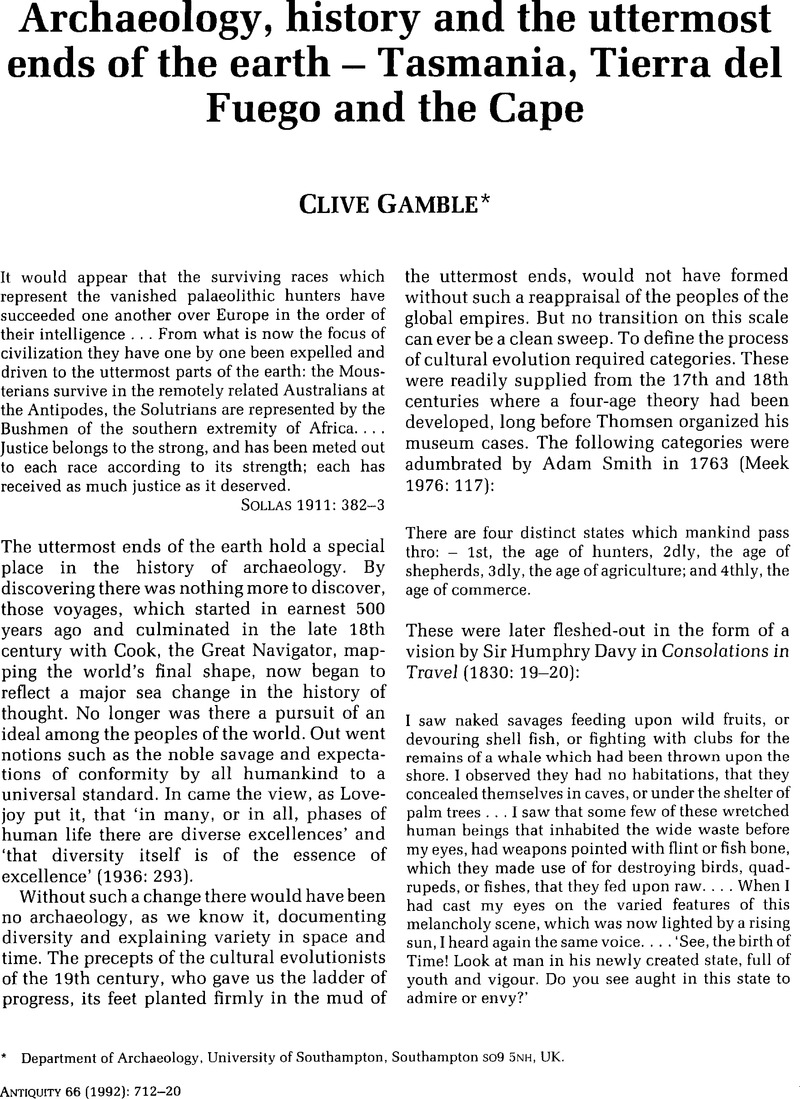Crossref Citations
This article has been cited by the following publications. This list is generated based on data provided by Crossref.
King, Barbara J.
1993.
Chimpanzee material culture: Implications for human evolution. By W. C. McGrew. Cambridge: Cambridge University Press. 1992. xvi + 277 pp. ISBN 0‐521‐42371‐6 $79.95 (cloth).
American Journal of Physical Anthropology,
Vol. 91,
Issue. 3,
p.
393.
Dowson, Thomas A.
1993.
Changing fortunes of Southern African archaeology: comment on A.D. Mazel's ‘history’.
Antiquity,
Vol. 67,
Issue. 256,
p.
641.
Trigger, Bruce G.
1995.
Archaeology and the Integrated Circus.
Critique of Anthropology,
Vol. 15,
Issue. 4,
p.
319.
McNiven, Ian J.
and
Russell, Lynette
1997.
‘Strange paintings’ and ‘mystery races’: Kimberley rockart, diffusionism and colonialist constructions of Australia's Aboriginal past.
Antiquity,
Vol. 71,
Issue. 274,
p.
801.
Johnson, Nuala C.
1999.
Framing the past: time, space and the politics of heritage tourism in Ireland.
Political Geography,
Vol. 18,
Issue. 2,
p.
187.
Stam, Robert
and
Shohat, Ella
2005.
Postcolonial Studies and Beyond.
p.
293.
Barlow, Tani E.
2005.
Postcolonial Studies and Beyond.
p.
359.
Cooper, Frederick
2005.
Postcolonial Studies and Beyond.
p.
401.
Ferguson, James
2005.
Postcolonial Studies and Beyond.
p.
166.
Scott, David
2005.
Postcolonial Studies and Beyond.
p.
385.
Brennan, Timothy
2005.
Postcolonial Studies and Beyond.
p.
101.
Stein, Rebecca L.
2005.
Postcolonial Studies and Beyond.
p.
317.
Nixon, Rob
2005.
Postcolonial Studies and Beyond.
p.
233.
Sole, Kelwyn
2005.
Postcolonial Studies and Beyond.
p.
182.
Menon, Nivedita
2005.
Postcolonial Studies and Beyond.
p.
206.
Povinelli, Elizabeth A.
2005.
Postcolonial Studies and Beyond.
p.
145.
Behdad, Ali
2005.
Postcolonial Studies and Beyond.
p.
62.
Comaroff, Jean
2005.
Postcolonial Studies and Beyond.
p.
125.
Chrisman, Laura
2005.
Postcolonial Studies and Beyond.
p.
252.
Hulme, Peter
2005.
Postcolonial Studies and Beyond.
p.
41.



